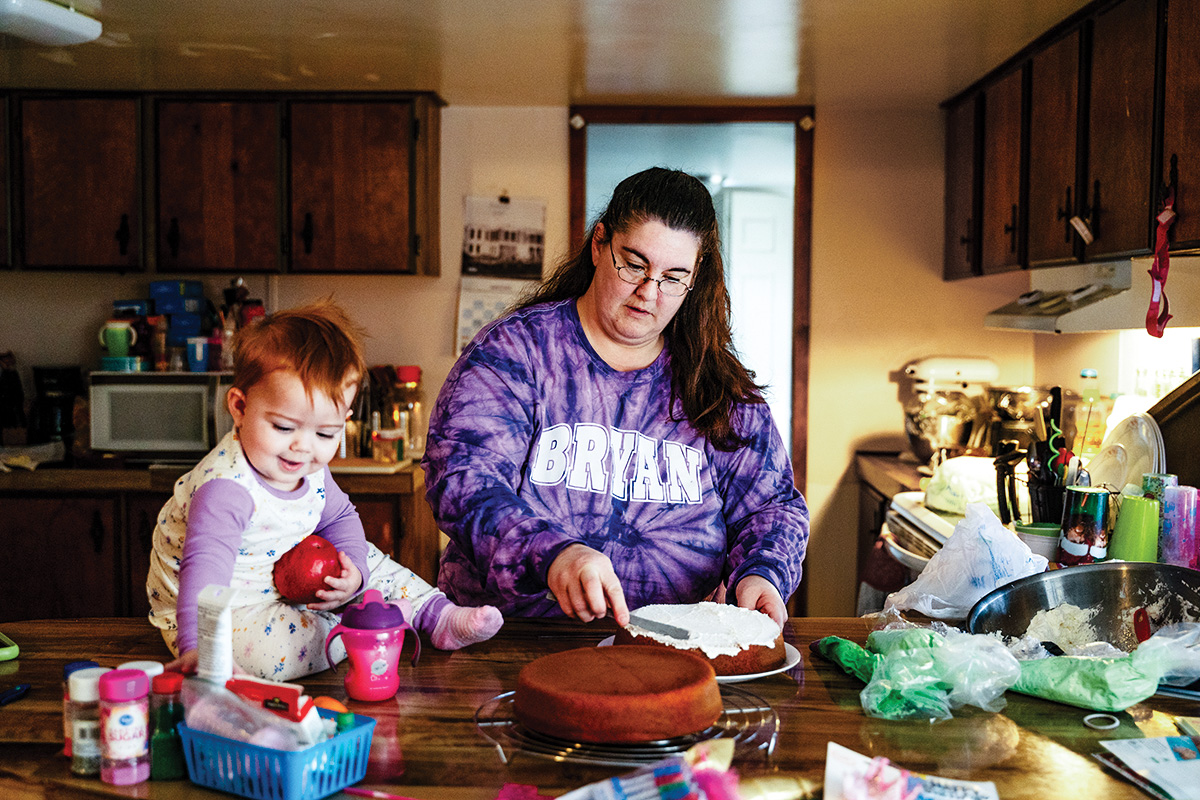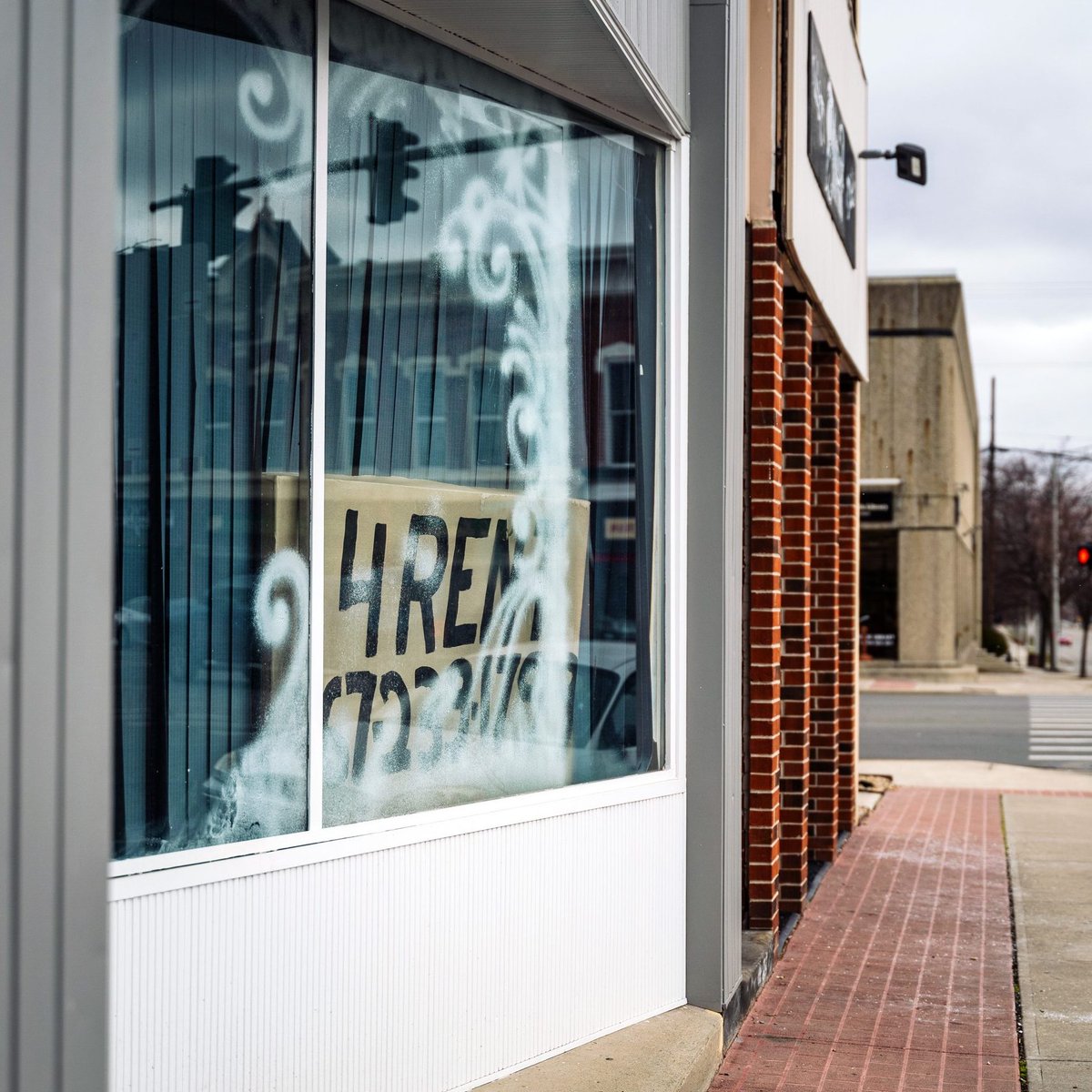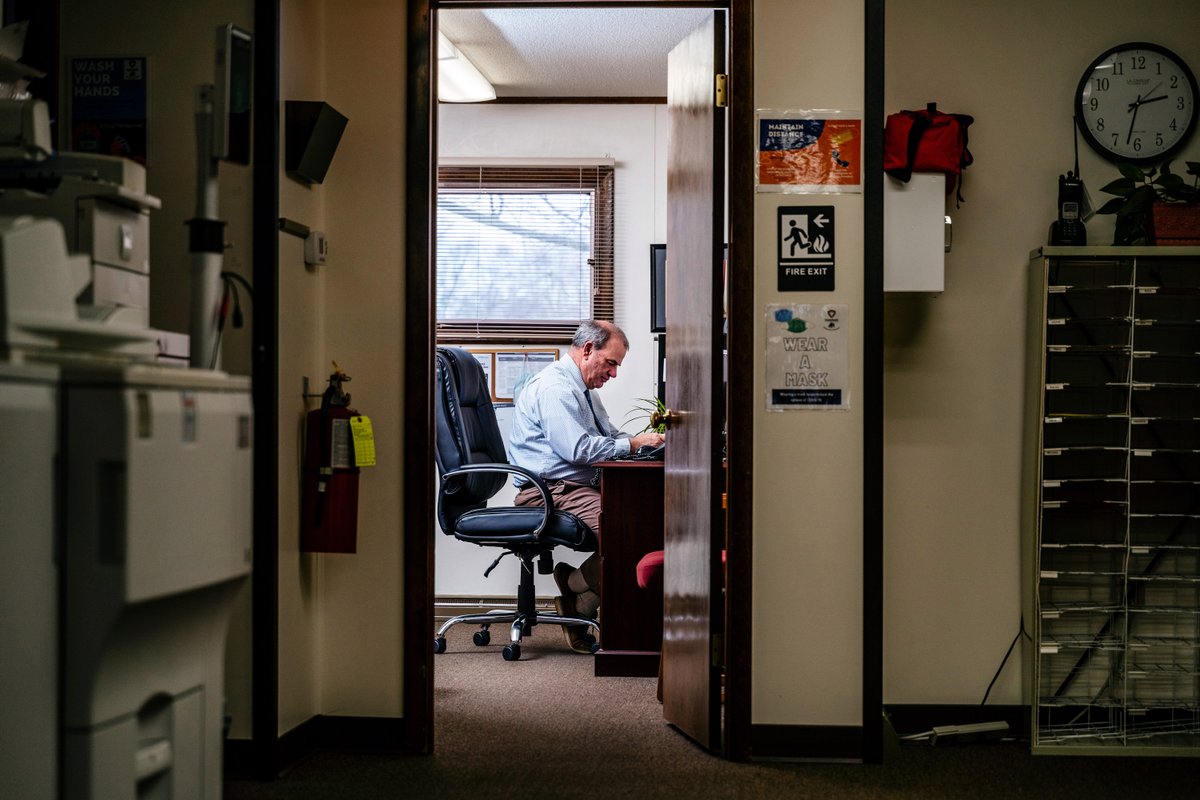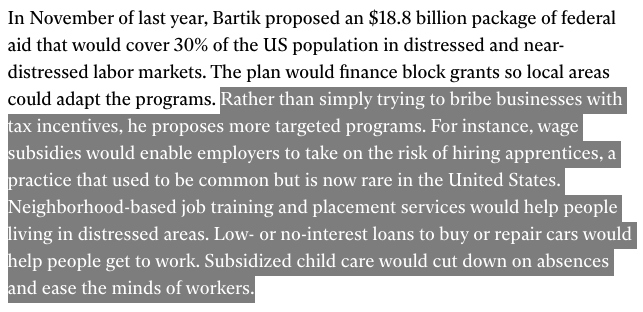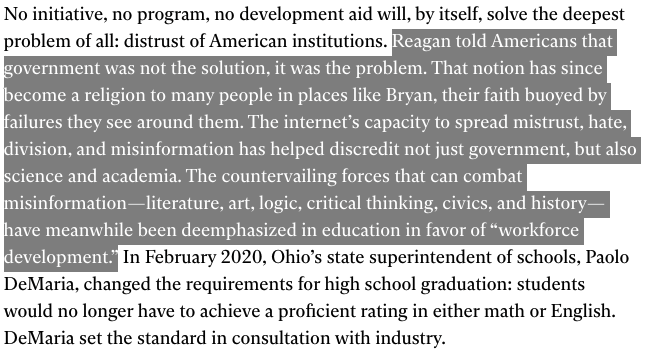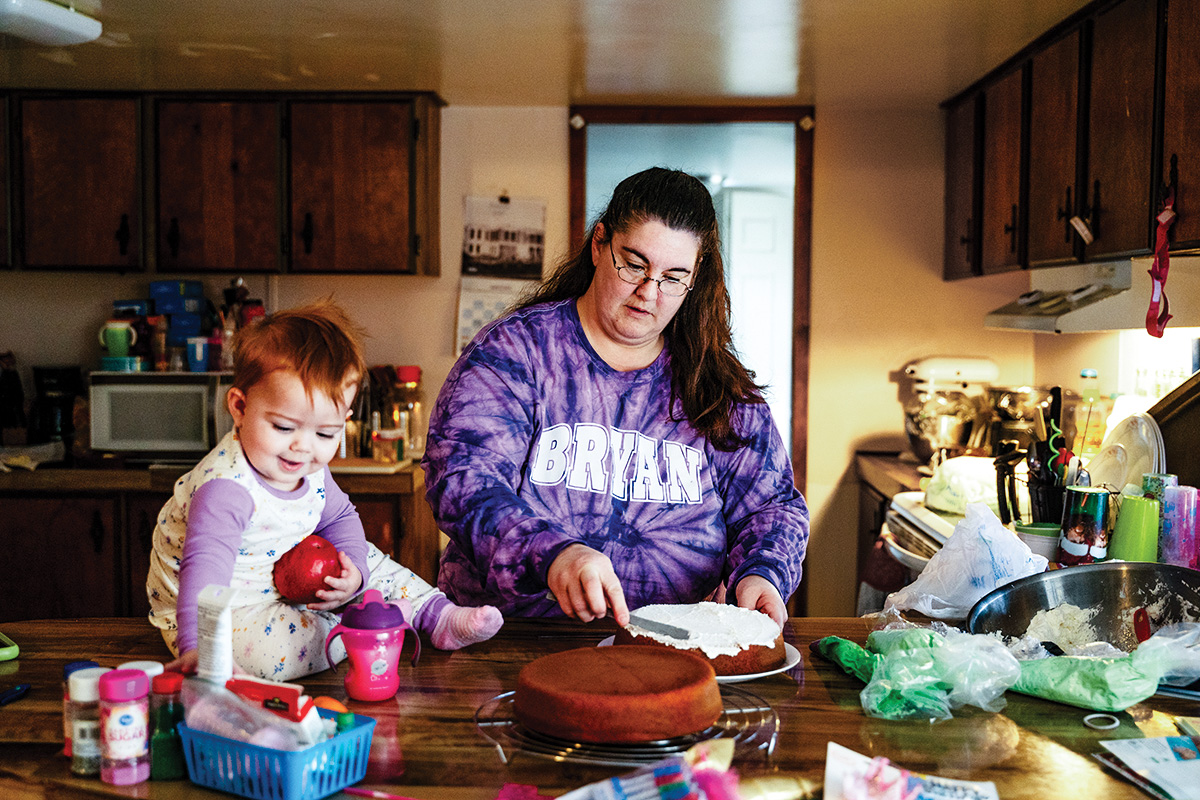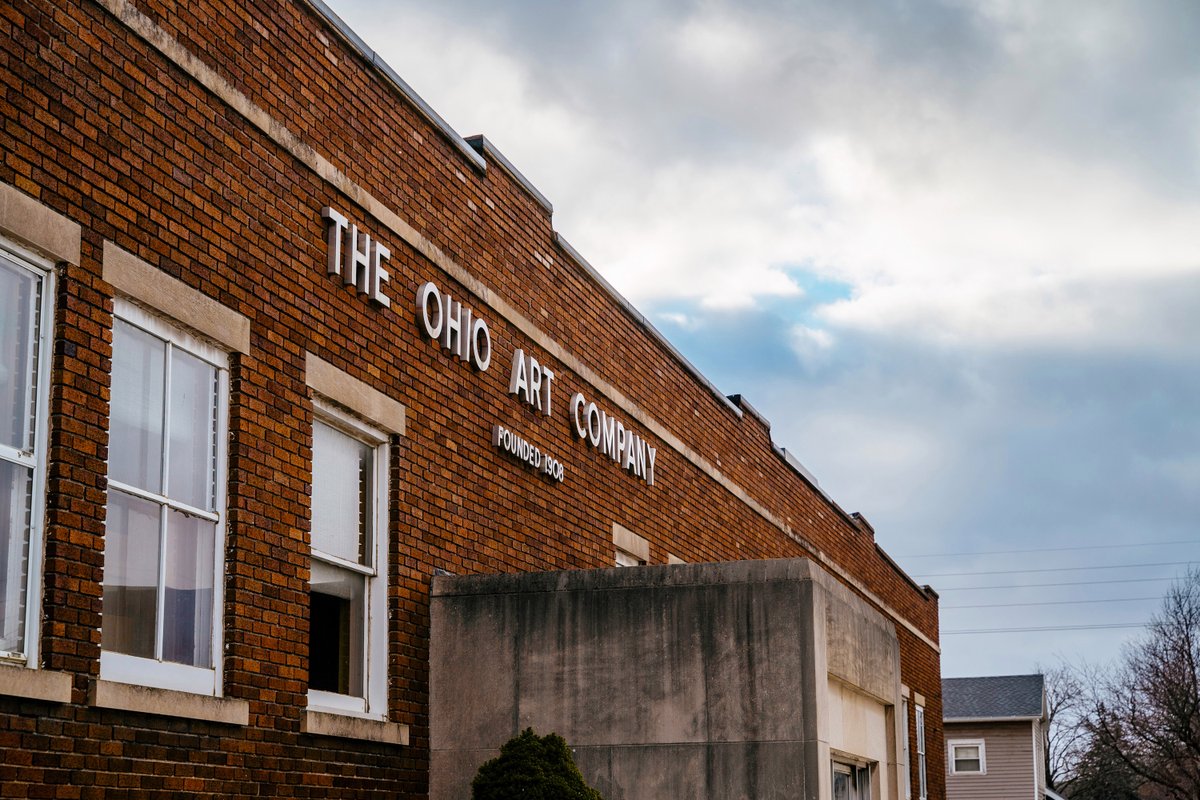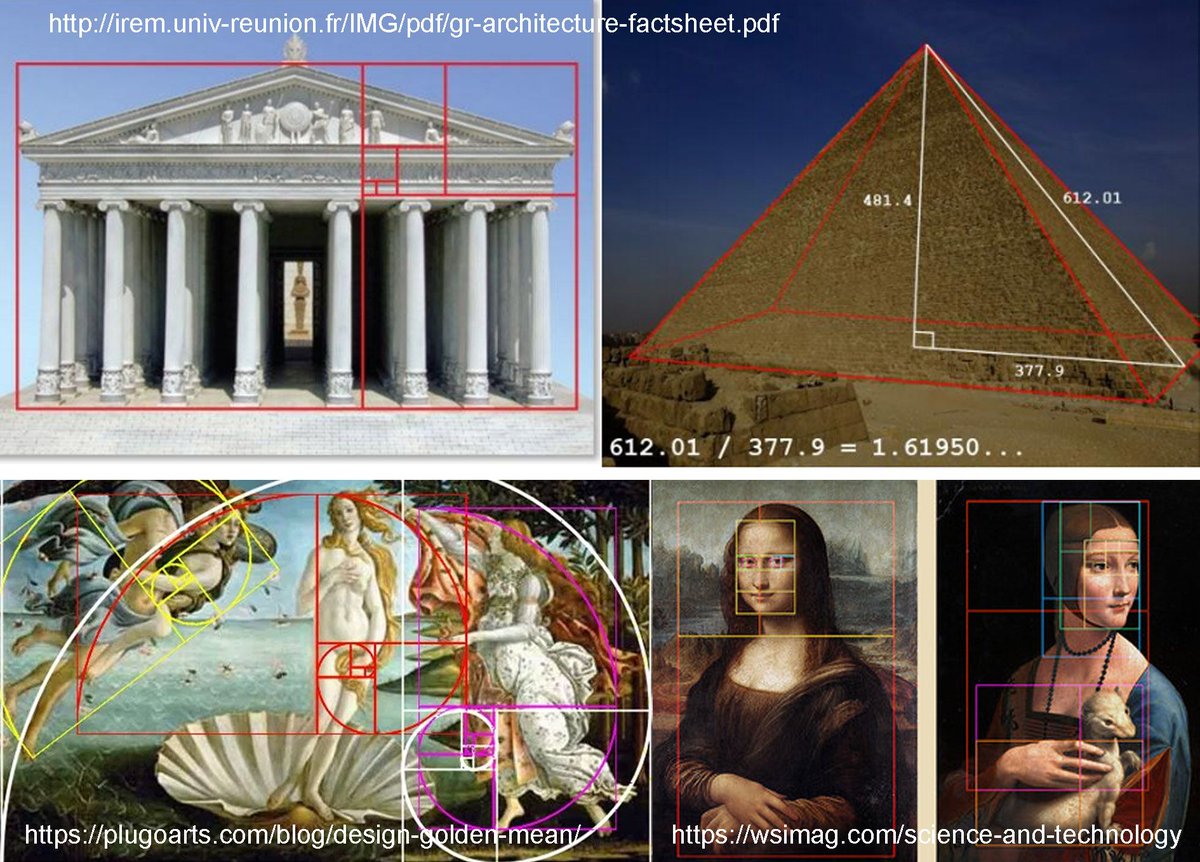This is Valerie. She’s 46 and has worked all her life—three jobs currently—yet she has just $65 in her checking account. Her husband works full time at a metal fastener plant.
Altogether, after health insurance premiums but before taxes, Valerie and her husband make about $45,000 a year.
The story of her working life is also the story of Bryan. The town is broken in some of the same ways that much of the rest of the country is broken. Understanding what broke Bryan is crucial to understanding how it might be fixed.
For decades, America’s political and business leaders acted as if places like Bryan didn’t matter.
Palo Alto and Greenwich did fine. These centers of high tech and financial services create vast wealth in the US's so-called innovation economy. But hundreds of places like Bryan, both urban and rural, were allowed to erode. The innovation economy has largely passed them by.
Developing a cogent regional development policy is one of the most vital public policy challenges facing America.
.@POTUS campaigned in part on the promise of creating “technology hubs” in 50 forgotten cities.
https://t.co/P1DgcnqzcU
The diverging fates of places like Bryan and places like Palo Alto is clearly driving a loss of political faith, and that growing nihilism is threatening democracy itself. But it doesn't have to be like this. We can still turn it around.
https://t.co/M8Pto7AZrZ
In early 2020, Jim Watkins, the chief of the Williams County health department, began a project with a group from
@bgsu and the
@ClevelandFed to see what might be done to improve the county’s housing and living conditions.
(1/2) The plan, which had just taken its first steps when the covid-19 pandemic stalled it, aimed to develop policies and financing so:
(2/2)
-people could maintain their homes
-the community could develop better building codes and enforce them, blight could be removed from business districts
-community features could be created or improved to attract the public
.@TimBartik, a labor economist with the W.E.
@UpjohnInstitute for Employment Research in Kalamazoo, Michigan, has come up with a series of plans he calls “place-based job policies.”
Jobs have to pay more. Ohio’s minimum wage is only $8.80 an hour. The national minimum wage is just $7.25 and hasn’t risen since 2009. President Biden has proposed raising it to $15 per hour, which would be better, though still a low bar.
About 10% percent of Americans live in areas without access to broadband. Many who do have access can’t afford to pay for it. Expanding access and affordability could encourage entrepreneurs to think about starting businesses in places like Bryan, with its low cost of living.
This type of regional development could give towns like Bryan a draw they would not otherwise enjoy.
But no initiative, no program, no development aid will, by itself, solve the deepest problem of all: distrust of American institutions.
The pandemic has only exacerbated distrust that has been building for years.
The distrust and denial of truth and common sense only make it tougher for science and technology-based businesses to picture themselves in places like Bryan.
Unless there is deep and lasting investment in education sufficient to renew a faith in the possibility of rational progress, such areas can look forward to a future of low-paying, insecure jobs in warehouses and distribution centers, along with a handful of legacy manufacturers.
That means times will remain hard for people like Valerie, who recently wound up underemployed, again.
She gave up her two part-time jobs and finally got some sleep, but then, two days before Christmas, she was laid off by Sauder.
She quickly took a new part-time job with a home health agency while she spent the better part of a month fighting Ohio’s unemployment system. She still hadn’t received anything as of mid-January.
Now Valerie struggles to maintain her own faith. “I take one day at a time,” she says. “I don’t look too far in advance. I count my blessings every day.”
This was an excerpt from
@BrianRAlexander’s subscriber exclusive on how to fix what the innovation economy broke about America. It was repurposed for Twitter by
@Benji_Rosen, with inspiration from
@charlottejee. 👀 READ the full story:
https://t.co/M8Pto7AZrZ
Not yet a subscriber? For $50 per year, you’ll get unlimited access to our journalism and our award-nominated newsletter on artificial intelligence, The Algorithm. Your support also helps sustain our mission-driven journalism.
https://t.co/JmdZJSFSsm
